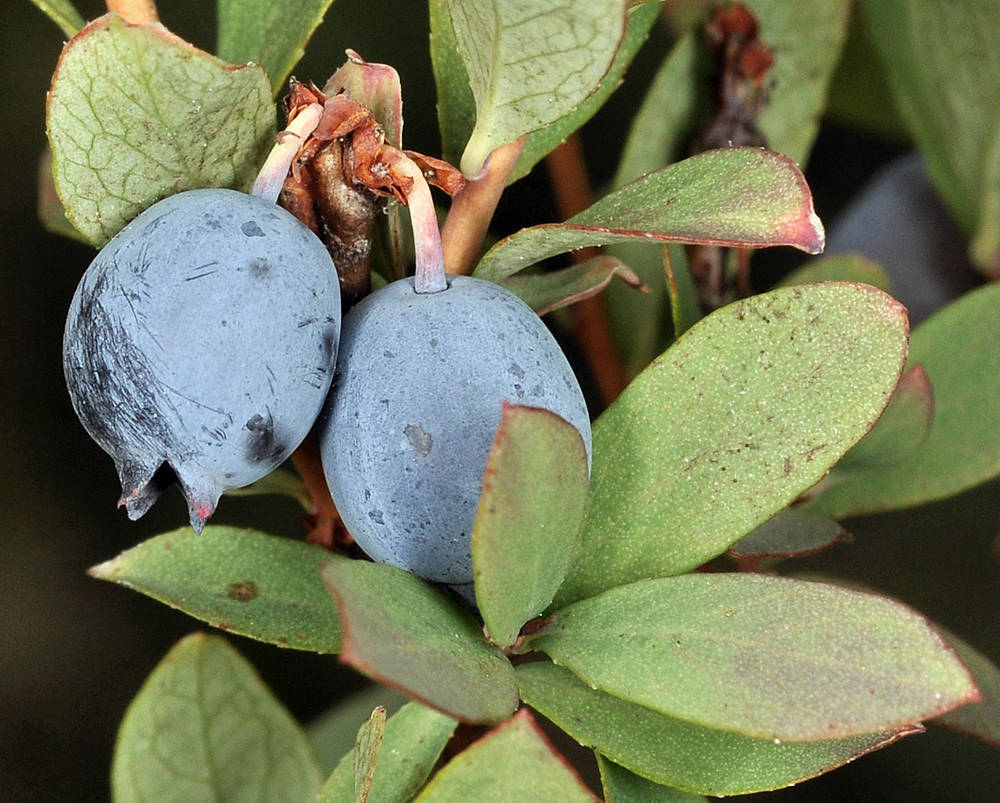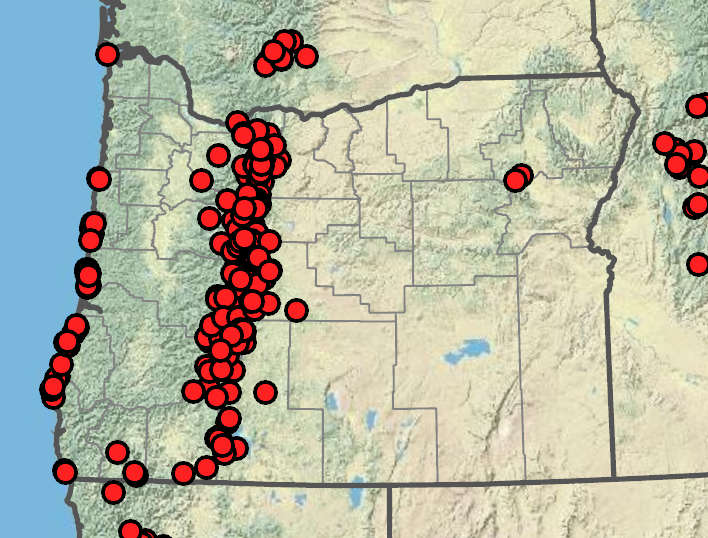Vaccinium uliginosum
Vaccinium macrocarpon
bog bilberry, bog blueberry
cranberry
ovate to elliptic, 9–29 × 4–18 mm; thin or thick at maturity;
margins entire;
tips rounded to acute;
surfaces abaxially glabrous or glaucous, adaxially glabrous.
ovate to elliptic, 5–18 × 2–7 mm, lightly glaucous abaxially, green to dark green adaxially; stiff;
margins entire;
tips rounded to subacute;
surfaces abaxially glaucous, adaxially glabrous.
racemes, 2–4-flowered, occasionally 1-flowered.
solitary flowers in axils;
bracts 1–2 mm wide.
distinct;
sepals 4 or 5, usually glaucous;
corollas urceolate, 4–6 × 2–5 mm, white to pink, glaucous;
petals 4 or 5;
filaments ? anthers, glabrous.
sepals 4;
calyces shallowly lobed, deltate, red, glaucous;
petals 4, 5–12 mm, glabrous; whitish pink to pink;
lobes deeply parted;
filaments 25–33% as long as anthers, pubescent.
4–9 mm in diameter, blue to bluish black, with a faint bloom.
7–15 mm in diameter, pink to red, with or without a bloom.
=24, 48, 72.
=24.
Vaccinium uliginosum
Vaccinium macrocarpon
Wet mid-elevation montane and coastal habitats. Flowering May–Sep. 0–2400 m. BW, Casc, ECas, Est, Sisk. CA, ID, NV, WA; northern US and Canada; Asia, Europe. Native.
Some authorities consider the coastal form of V. uliginosum a distinct species (V. occidentale). If recognized, this species would be identified by its distinctly reticulated leaf veins, thin leaves, and smaller fruits.
Wet coastal habitats. Flowering May–Jul. 0–50 m. Est. WA; north to British Columbia, eastern North America; Europe. Exotic.
Native to eastern North America, Vaccinium macrocarpon has escaped cultivation and naturalized elsewhere. This species appears closely related to V. oxycoccos. Whether these species will hybridize in the wild remains to be investigated.
Stephen Meyers
Stephen Meyers
- Local floras:
BC,
OR,
WA
- Local Web sites:
Flora NW,
PNW Herbaria
WildflowerSearch
iNaturalist (observations)
USDA Plants Database
- LBJ Wildflower Center
- SEINet
- Plants of the World Online
- Encyclopedia of Life
- Wikipedia
- Google Image Search
- Local floras:
BC,
CA,
OR,
WA
- Local Web sites:
CalFlora,
CalPhotos,
Flora NW,
PNW Herbaria
WildflowerSearch
iNaturalist (observations)
USDA Plants Database
- LBJ Wildflower Center
- SEINet
- Plants of the World Online
- Encyclopedia of Life
- Wikipedia
- Google Image Search





